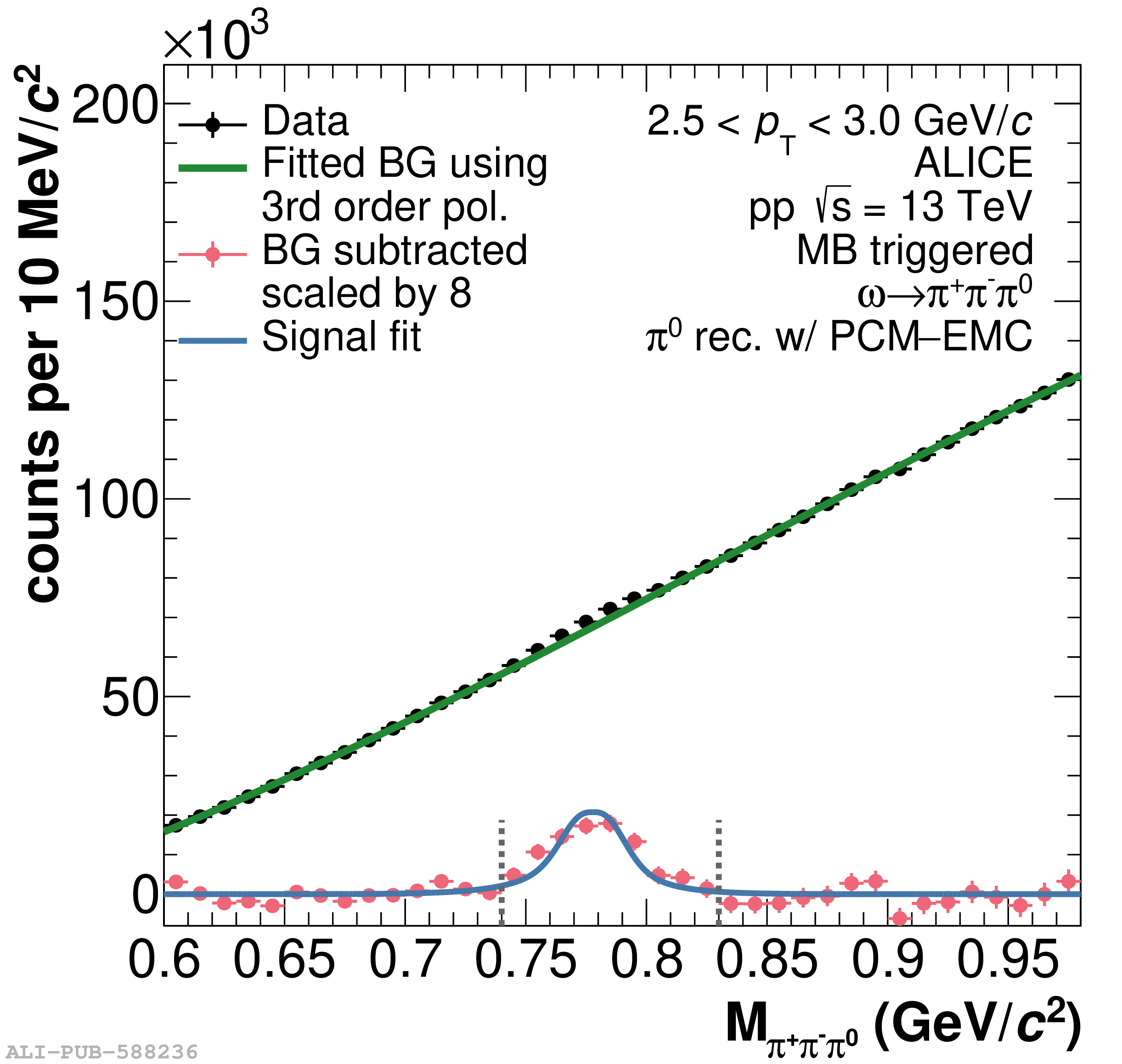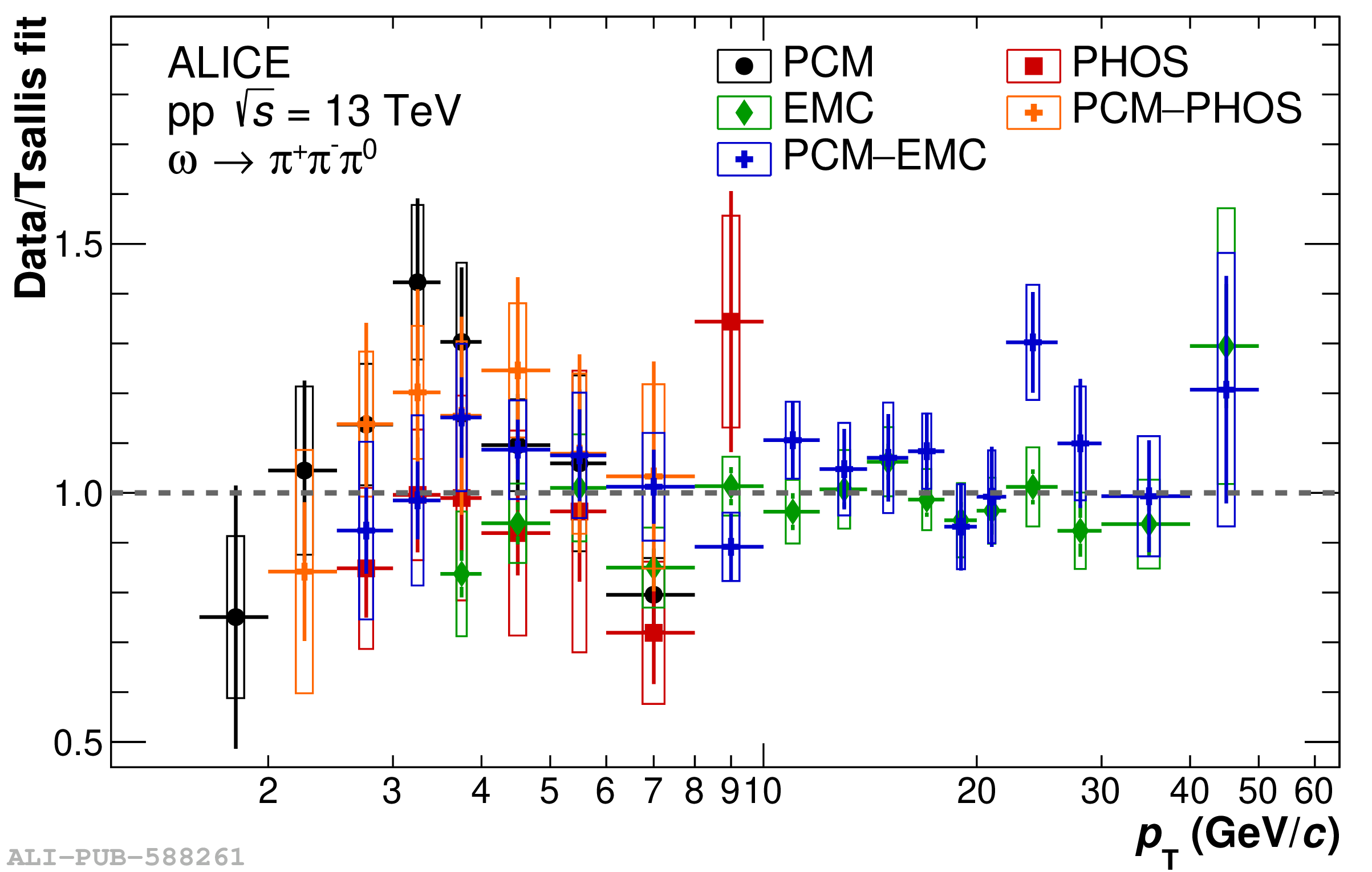The $p_{\rm T}$-differential cross section of $\omega$ meson production in pp collisions at $\sqrt{s}= 13$ TeV at midrapidity ($|y|<~0.5$) was measured with the ALICE detector at the LHC, covering an unprecedented transverse-momentum range of $1.6 <~p_{\rm T}<~ 50$ GeV/$c$. The meson is reconstructed via the $\omega\rightarrow\pi^+\pi^-\pi^0$ decay channel. The results are compared with various theoretical calculations: PYTHIA8.2 with the Monash 2013 tune overestimates the data by up to 50%, whereas good agreement is observed with Next-to-Leading Order (NLO) calculations incorporating $\omega$ fragmentation using a broken SU(3) model. The $\omega/\pi^0$ ratio is presented and compared with theoretical calculations and the available measurements at lower collision energies. The presented data triples the $p_{\rm T}$ ranges of previously available measurements. A constant ratio of $C^{\omega/\pi^0}=0.578\pm0.006~\text{(stat.)}\pm 0.013~\text{(syst.)}$ is found above a transverse momentum of $4$ GeV/$c$, which is in agreement with previous findings at lower collision energies within the systematic and statistical uncertainties.
J. High Energ. Phys. 04 (2025) 067
HEP Data
e-Print: arXiv:2411.09432 | PDF | inSPIRE
CERN-EP-2024-303
Figure group









